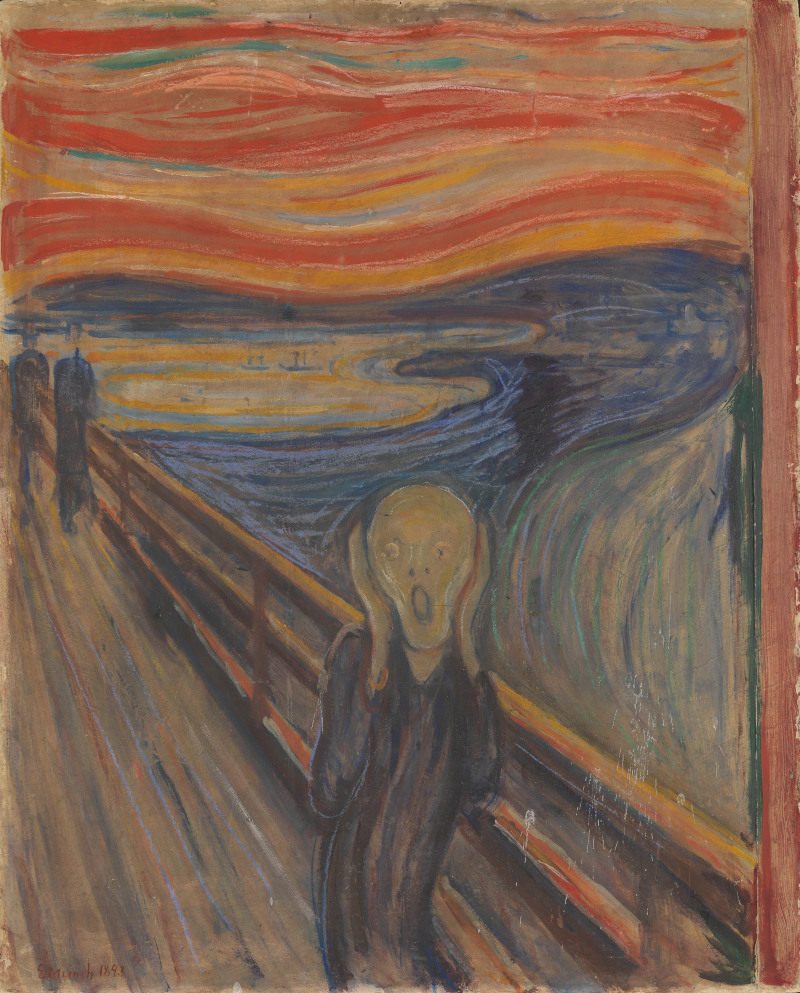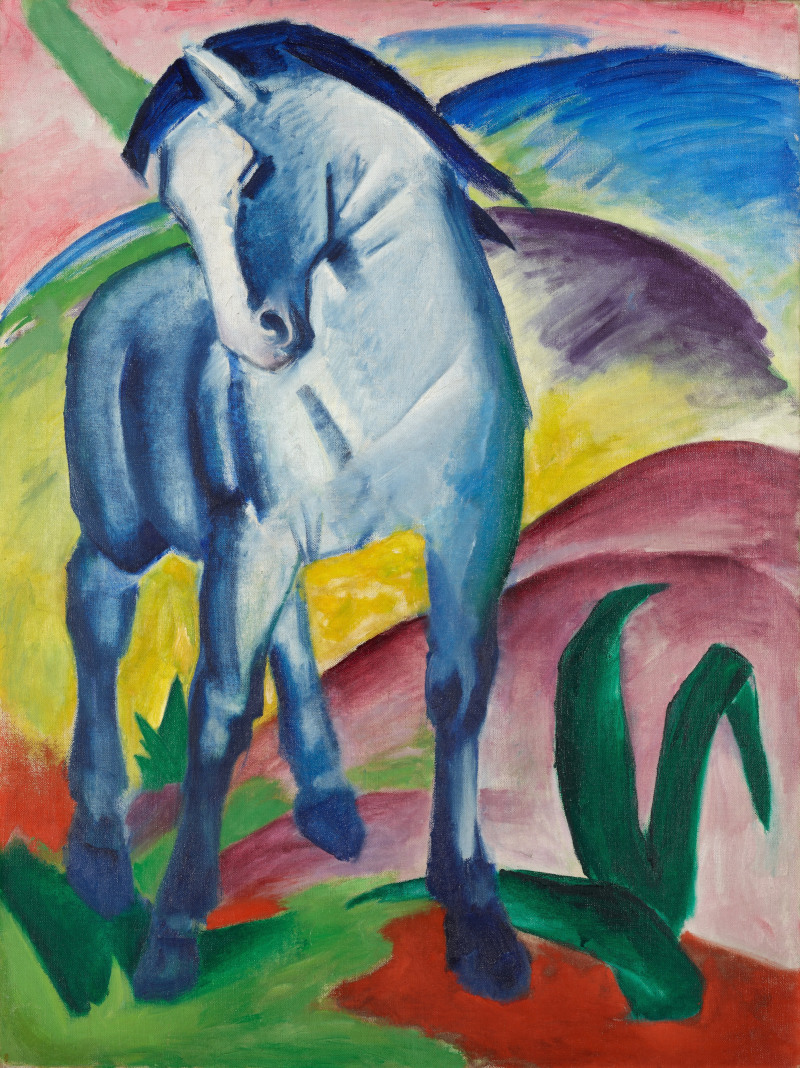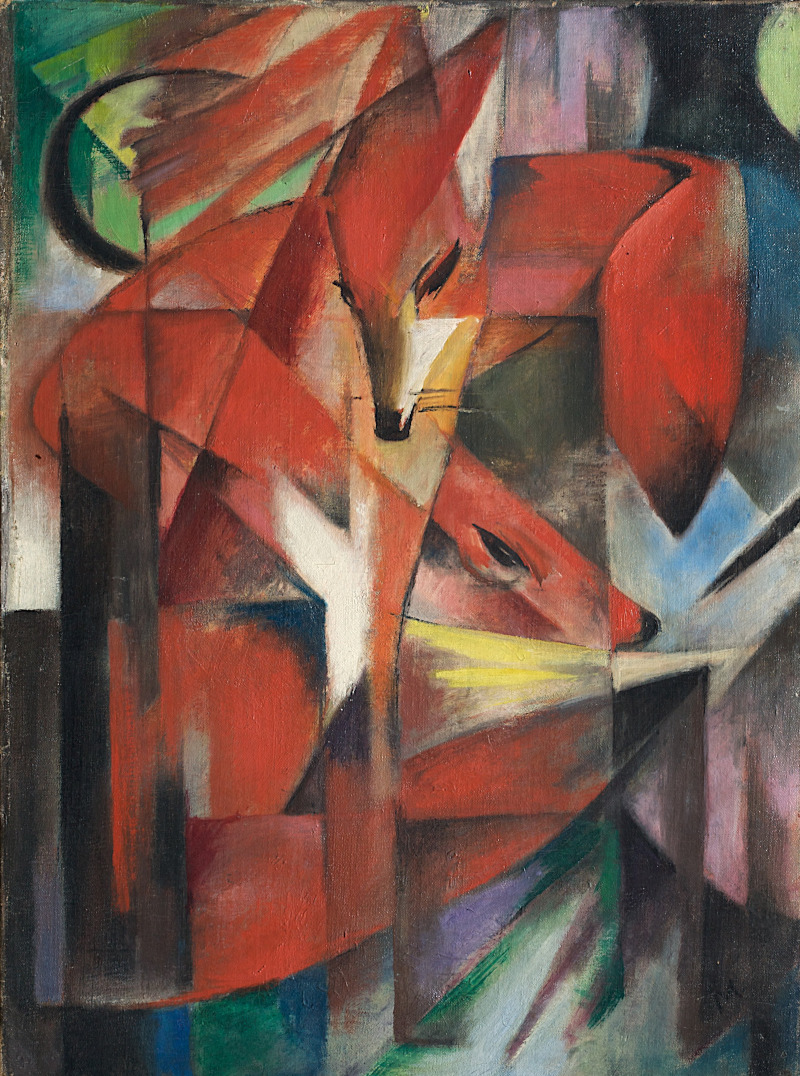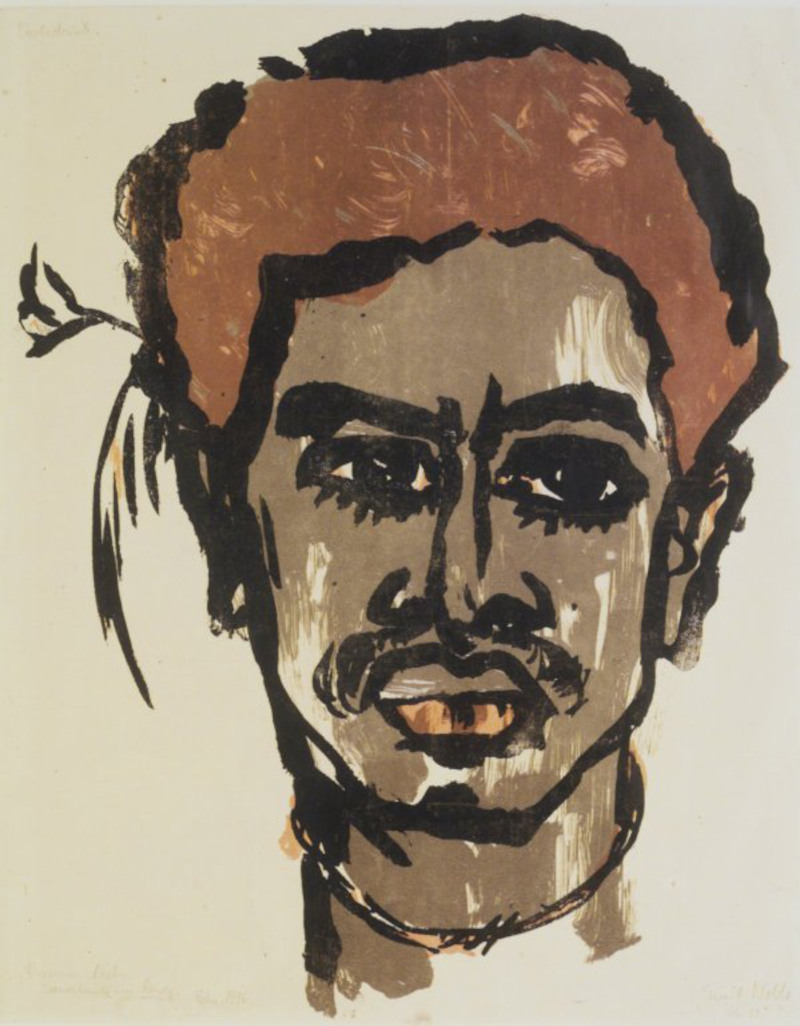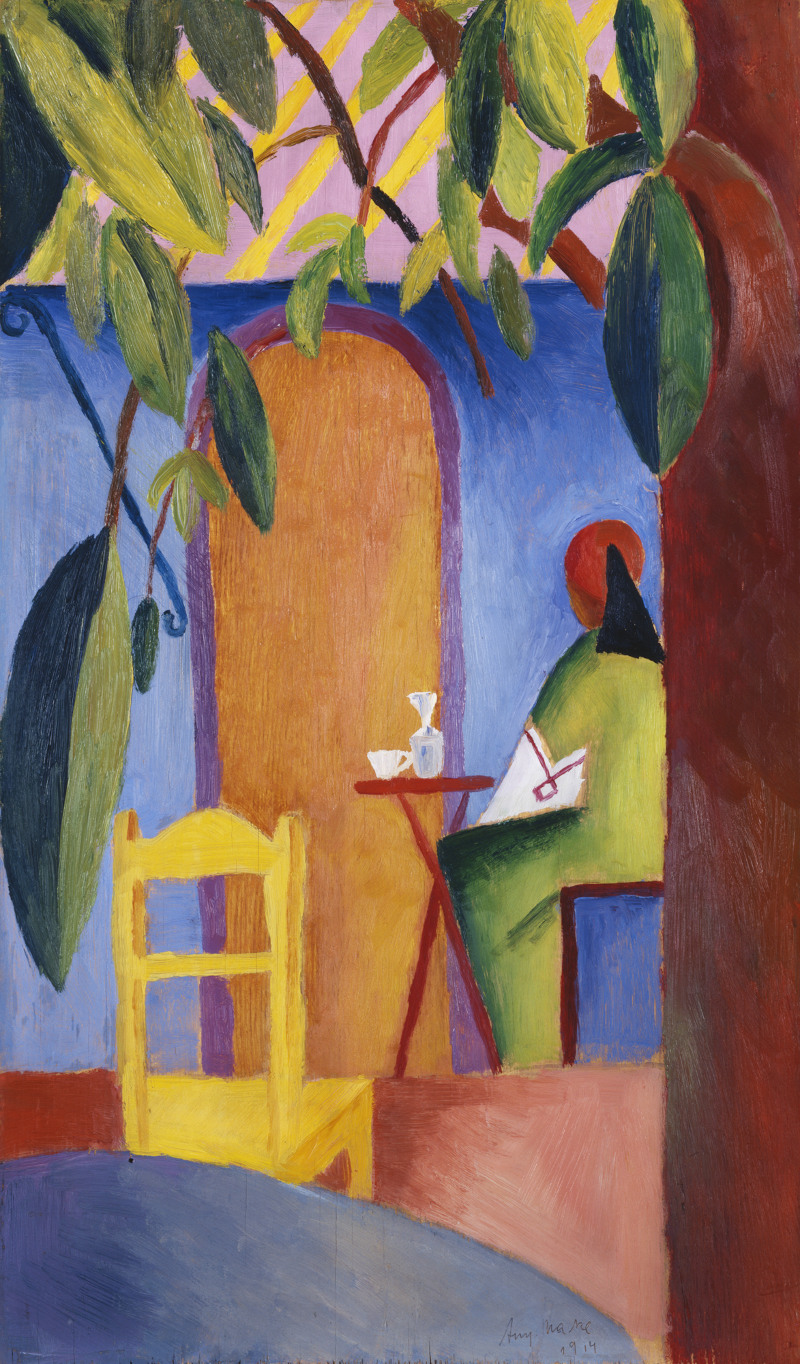Learn more about the impact of Expressionism Art, and browse the most famous Expressionist Artists in this extensive article.
Expressionism was a major European art movement that emerged in the early 20th century. Its exponents wanted to allow a true freedom of expression within the art world, and avoid any attempt to force them to conform to traditional methods. This was the polar opposite to French art from centuries earlier, where art academies were formed with the intention of encouraging a single artistic style.
The 20th century was all about freedom, and not just in the art world. Society was becoming more open across Europe, and minorities were starting to receive more respect than had previously been the case. This evolution continued in the 21st century, up to the present day and no doubt will continue to change in hte following years.
Introduction to Expressionism Art
Expressionism art has many strands and off-shoots, both stylistically and geographically. German Expressionist artists are heavily featured in our list below, along with a number of American Abstract Expressionists, plus some other notable names who do not fit into either of these two groups.
Famous Expressionist artists were considered Avant-garde during their own lifetimes, and even now their work appears contemporary and relatively fresh. They mastered a wide variety of mediums, and certainly did not only focus on oil painting, also embracing various methods of sketching which suited this raw, expressive artistic style.
List of Famous Expressionist Artists
We have collated a list of famous Expressionist artists from the 20th century below, and there is a good variety of American and German painters, alongside a number of artists, plus several female Expressionist artists too. Each artist has a short bio, along with some examples of their work, be it paintings, sculptures or drawings.
Those featured in this article remain some of the most popular artists in history, and exhibitions of their work continue to be well supported by the public who appreciate the modern, expressive nature of their work. They mark the open nature of the art world today, where artists are allowed, even encouraged to force their own creative paths.
Wassily Kandinsky
Wassily Kandinsky was a Russian painter who played a major role in the development of abstract art, and was a key member of the Expressionism movement. His work evolved over many decades, and eventually relied on complex arrangements of abstract shapes and lines.
The Russian was considerate in his use of color and wrote several publications that theorised the use of color within art. He became a part of the influential Blue Rider group and lived and worked in Germany for a number of years, where his modern style was more readily accepted.
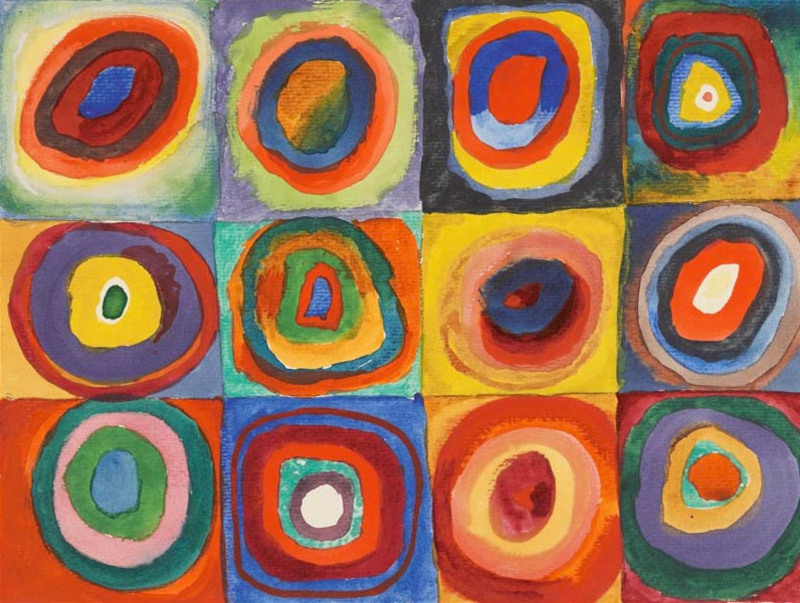 Squares with Concentric Circles, Abstract Painting
Squares with Concentric Circles, Abstract Painting
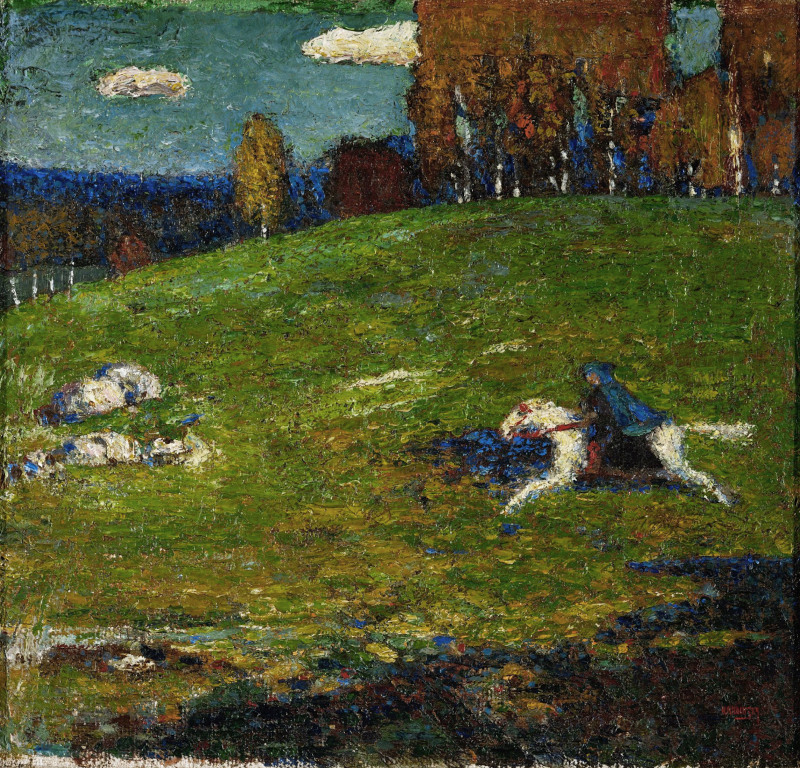 The Blue Rider by Wassily Kandinsky
The Blue Rider by Wassily Kandinsky
Ernst Ludwig Kirchner
Ernst Ludwig Kirchner was a talented German Expressionist artist who played a major role in the Die Brücke collective. His work was bold and abstract, relying on bright colors and an inventive mind, regularly focusing on figurative art. Kirchner's success was considerable in Germany within his own lifetime, and his reputation has since spread all across the western world.
Kirchner's style was primitive, just as intended, and beared some similarities to the naive approach of the early 20th century. Some might find a connection to traditional african art, where figures are stretched and completed in an abstract manner, making use of color to do much of the work.
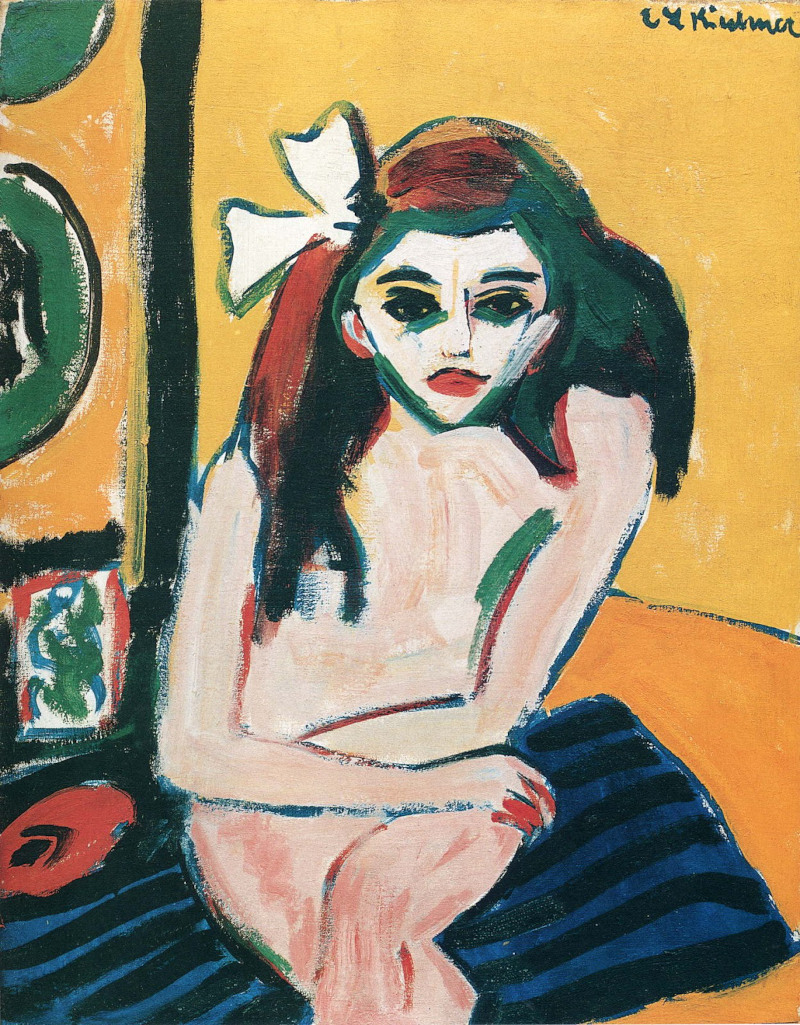 Marzella Female Portrait by Ernst Ludwig Kirchner
Marzella Female Portrait by Ernst Ludwig Kirchner
Franz Marc
Franz Marc is a very popular artist who predominantly focused on animals within his expressionist style. Most will have come across his work, even though they maybe unaware of the artist behind it. Marc was another member of this German group of highly skilled, forward-thinking artists.
Amongst his animal paintings, there were foxes, horses, and even a yellow cow. Contemporary animal paintings are currently very popular, and this has helped Franz Marc's oeuvre to reach modern audiences, with pictures of his work spreading across the internet like wildfire.
Edvard Munch
Edvard Munch is considered by some to be the most famous Expressionist artist in history, having given the world the iconic painting, The Scream. Emotion and inner turmoil were the inspiration for many of his most famous artworks, and he also arrived from outside of the standard German route that many others had followed.
Munch honed his talents as a draughtsman and etcher, sometimes carving designs into panels of wood. His troubled background fuelled a desire to release his inner demons on to the canvas, and sadly many of the Expressionists would be driven in this manner, just as Vincent van Gogh had done in the pre-cursor to this movement, namely the Post-Impressionists.
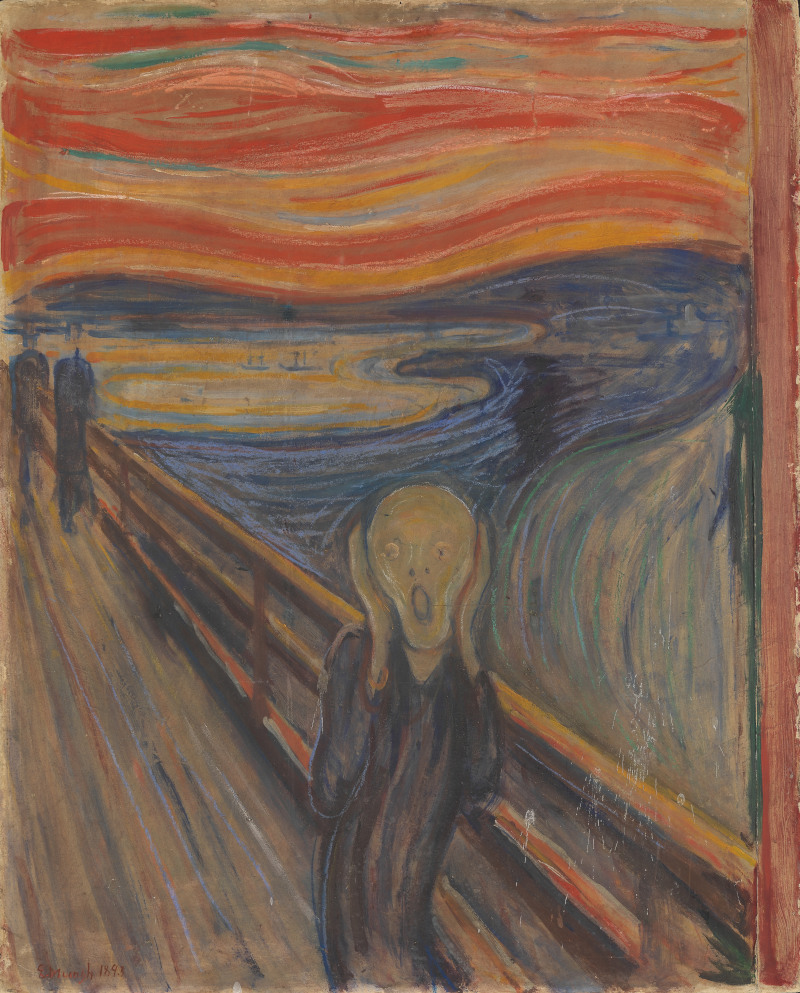 Edvard Munch's The Scream - Most Famous Expressionist Painting
Edvard Munch's The Scream - Most Famous Expressionist Painting
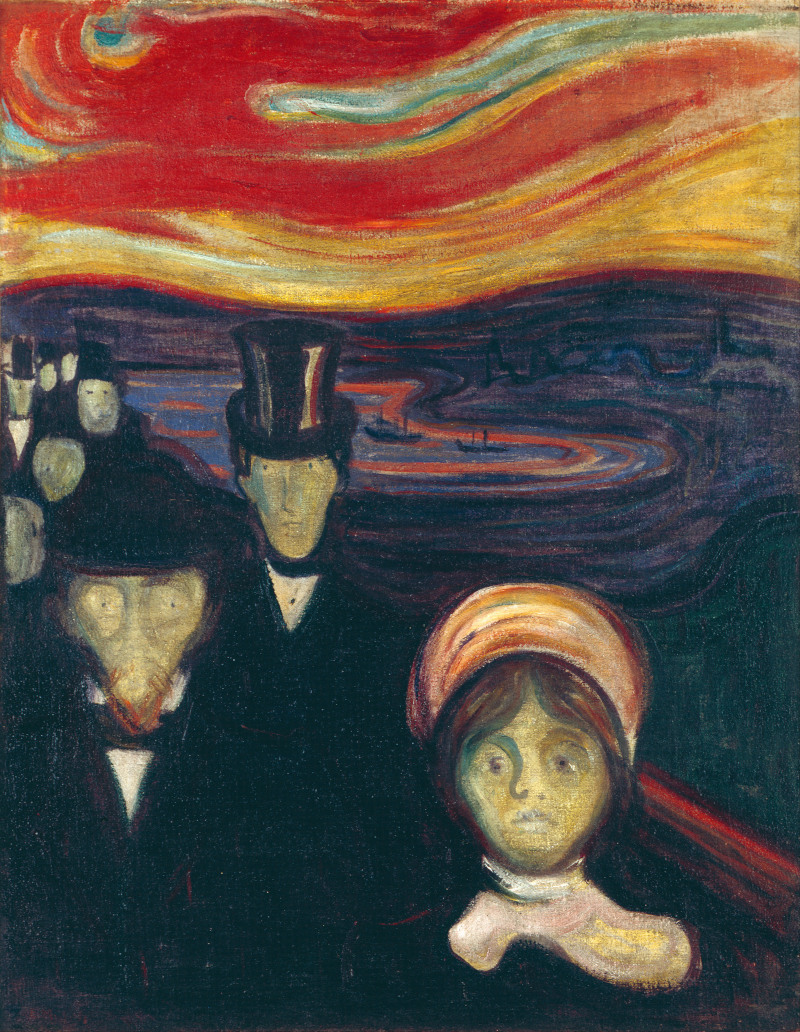 Edvard Munch Expressionist Painting, Anxiety
Edvard Munch Expressionist Painting, Anxiety
Egon Schiele
Egon Schiele was a talented drawing artist who mastered figurative art from an early age. He starred alongside Gustav Klimt in the era of the Art Nouveau, but his oeuvre differed somewhat from its other members. His depictions of various female models were unique in style, and instantly recognisable as his own.
Schiele would not insert much detail, and relied on his control of line, creating form from very little action as a sign of his genius. His life was sadly cut short, and who knows where his style may have evolved over time, but even at this early stage, Schiele can be regarded as one of the most talented Expressionist portrait painters.
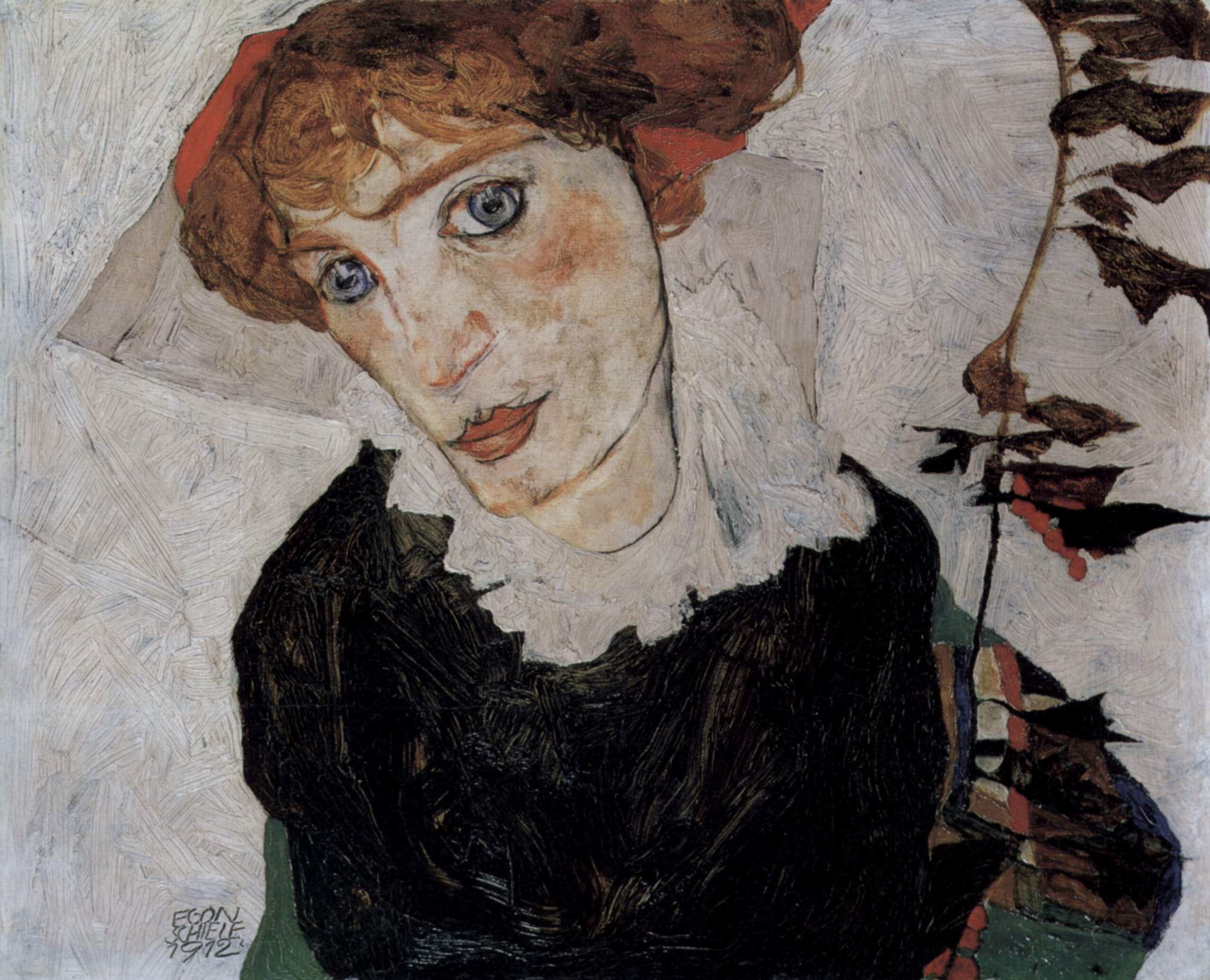 Portrait of Wally Neuzil by Egon Schiele, Expressionist Portrait Painting
Portrait of Wally Neuzil by Egon Schiele, Expressionist Portrait Painting
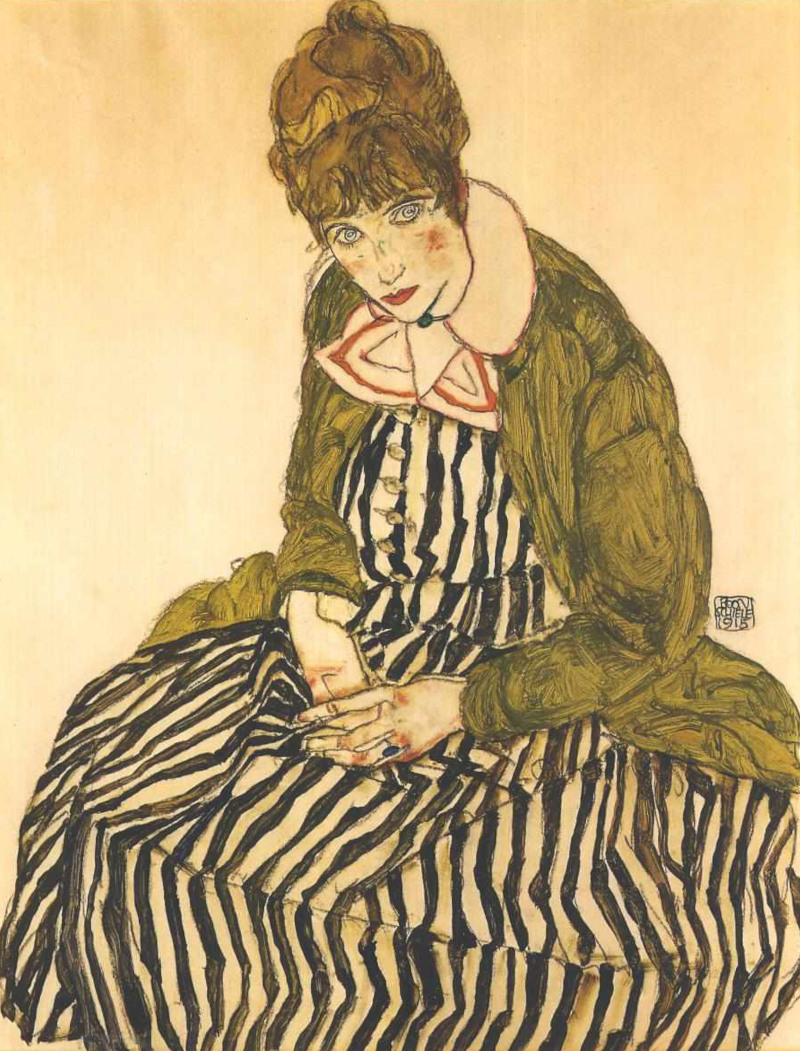 Edith Schiele in a Striped Dress by Egon Schiele
Edith Schiele in a Striped Dress by Egon Schiele
Paul Klee
Paul Klee was an extraordinary Swiss-German artist who work productively over a long period and was entirely devoted to the styles of modern art. He embraced abstract art to the full, and also took his ideas across multiple formats, including oil painting, watercolors and a good number of drawing tools.
His charming scenes are best summarised by Castle and Sun and Senecio, bring bold, bright colors to contemporary forms. He continually experimented with lines and shapes, leaving behind a huge trove of work which ran into the many thousands. He remains regarded as one of the leading figures in 20th century modern art circles.
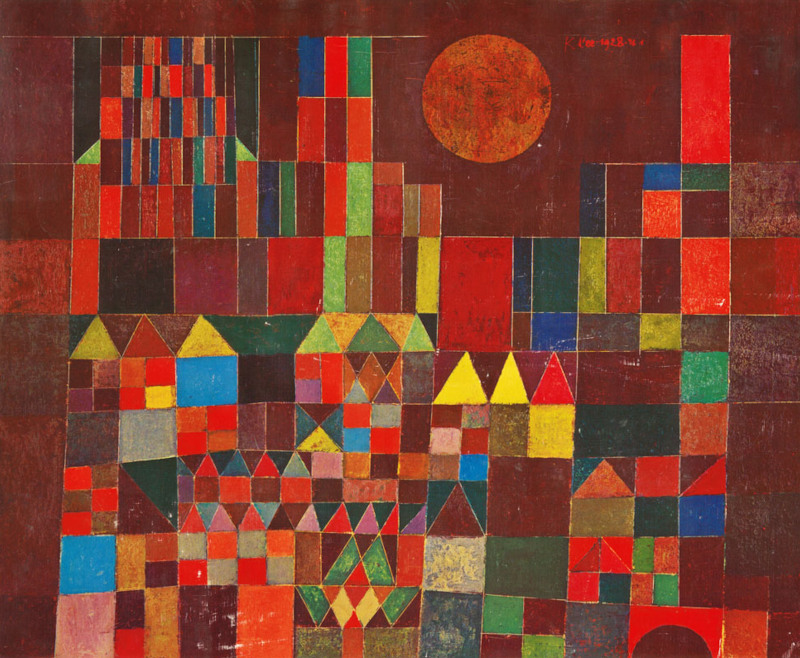 Castle and Sun by Paul Klee, Abstract Painting
Castle and Sun by Paul Klee, Abstract Painting
.jpg) Senecio by Paul Klee (Expressionist Painting)
Senecio by Paul Klee (Expressionist Painting)
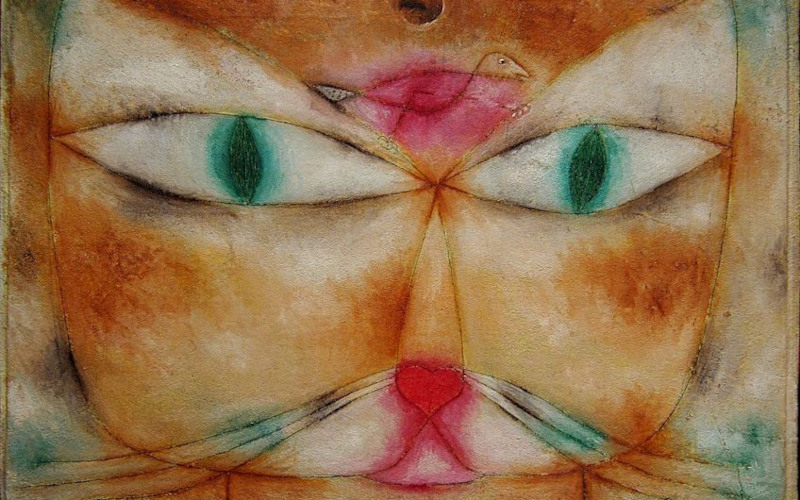 Cat and Bird, Expressionist Artist, Paul Klee
Cat and Bird, Expressionist Artist, Paul Klee
Käthe Kollwitz
Käthe Kollwitz was a famous female Expressionist painter whose honest depictions of life in Germany would also connect her to the Realism movement. The style and color of her work was dark, similar to the etchings of Edvard Munch in their aesthetic and content.
The German Expressionist era was highly valuable in the evolution of European art, but there were only a few female painters within this group. Therefore, the role of Käthe Kollwitz was particularly important, and her own contributions have received considerable focus in recent years as some of the most famous female artists have been exposed to the public more readily.
Oskar Kokoschka
Oskar Kokoschka was an Austrian artist who came towards the ed of the Expressionist movement, but also achieved success in a number of other disciplines, including poetry. In living until 1980, the artist provided a steady stream of Expressionist art, even after many of the other artists who worked in this manner were no-longer with us.
Kokoschka made use of dimly-lit backgrounds, with swirling figurative art and elaborate city scenes which seemed to combine all manner of different influences from across the spectrum of European art. Kokoschka drew some of his portraits in a similar manner to Schiele, and perhaps offers us a glimpse of how the latter might have proceeded, had he lived a longer life.
Emil Nolde
Emil Nolde used a brighter palette in his work than many in this list of Expressionism artists. He liked to capture portrait figures, but elements of nature also featured fairly regularly. He came early in the evolution of the Expressionists, and was a major influence on its direction due to his role in the Die Brücke movement.
Today, Nolde's work is impacted by his controversial views on race, which has not helped his legacy. These do not match his love for flowers, and nature more generally, though his inclusion of these within art is likely to have been influenced by his respect for the work of Dutch Post-Impressionist painter, Vincent van Gogh.
Max Beckmann
Max Beckmann delivered moody artworks which captured figurative art in the style of Expressionism, even though he personally rejected this label. The political instability in his native Germany coincided with the use of dramatic, even brutal content within his work which seemed to combine modern art with elements of El Greco and Artemisia Gentileschi.
Beckmann's work has lasted the test of time since his passing in 1950, and today he is regarded as a leading figure in the rise of German Modern art, even though he liked to distance himself from groups and labels. His brutal, dark approach tends to be loved and hated in equal amount.
Otto Dix
Otto Dix was a key part of the Neue Sachlichkeit (New Objectivity) movement which appeared in Germany in the early 20th century. He focused on normal life in Germany at the time, with a brutal honesty that was shocking and impactful. Darkness spread through much of his work, both in style but also color.
Germany was the most significant contributor to the wider Expressionism movement, though other notable artists also came from Russia, America, Scandinavia, France and the UK. European art was beginning to become more inclusive and let geographically-based, which is even more the case today.
August Macke
August Macke was a key member of Der Blaue Reiter (The Blue Rider) group and had a similar artistic style to his compatriot, Ernst Kirchner. He loved to capture scenes of everyday life, including cityscapes from unusual angles. He liked to deliver bright colors, though slightly gradiented, which became a key part of his style.
Macke also travelled to North Africa for a period which brought alternative types of content into his oeuvre, including some stunning islamic architecture which seemed to suit his bright colors and focus on small, quiet streets away from the hustle and bustle of everyday life.
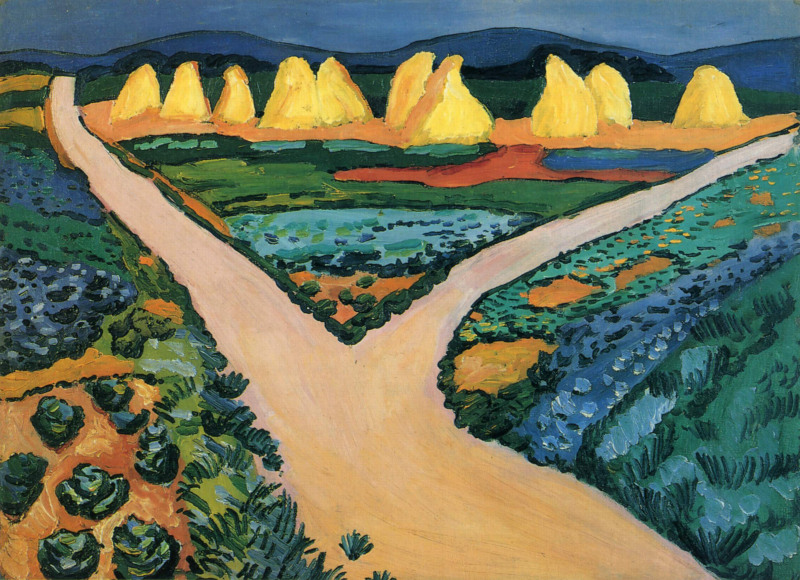 Vegetable Fields by August Macke
Vegetable Fields by August Macke
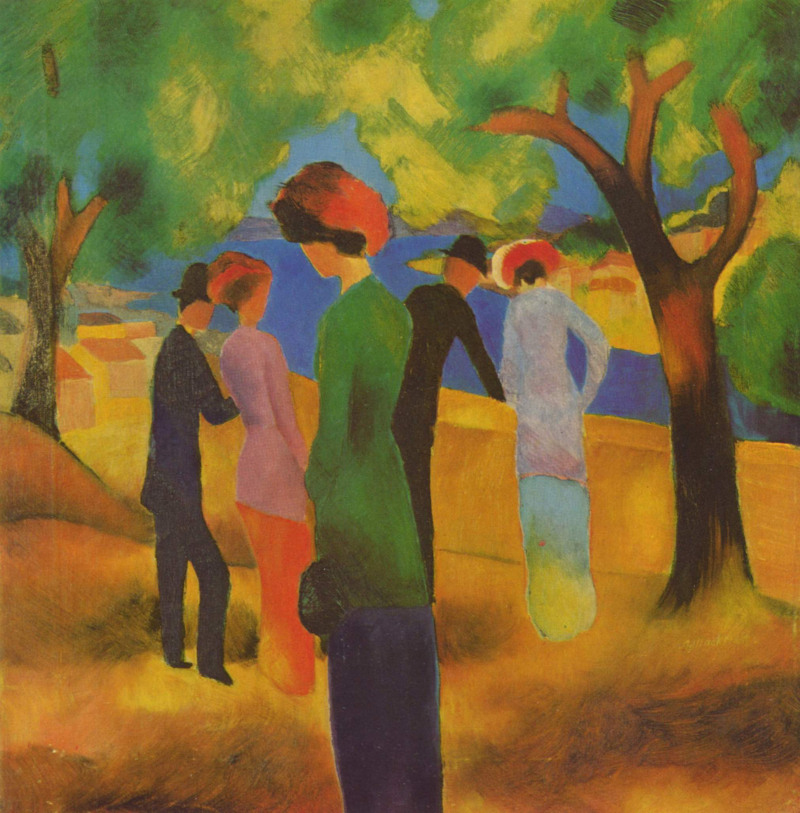 Lady in a Green Jacket - Famous Expressionism Painting
Lady in a Green Jacket - Famous Expressionism Painting
Alexej von Jawlensky
Alexej von Jawlensky was a Russian artist who starred in the late 19th and early 20th century. He specialised in bright portrait paintings with limited detail, which perfectly matched the approach of the Expressionists found elsewhere in Europe. He would later move to Germany and star in a number of significant modern art movements.
As with many artists in the early 20th century, political instability would force him to relocate several times. Additionally, his contemporary style was not to the taste of those more traditionally-minded, and he did experience some oppression of his work. Today, thankfully, his artistic legacy is well understood and documented in depth.
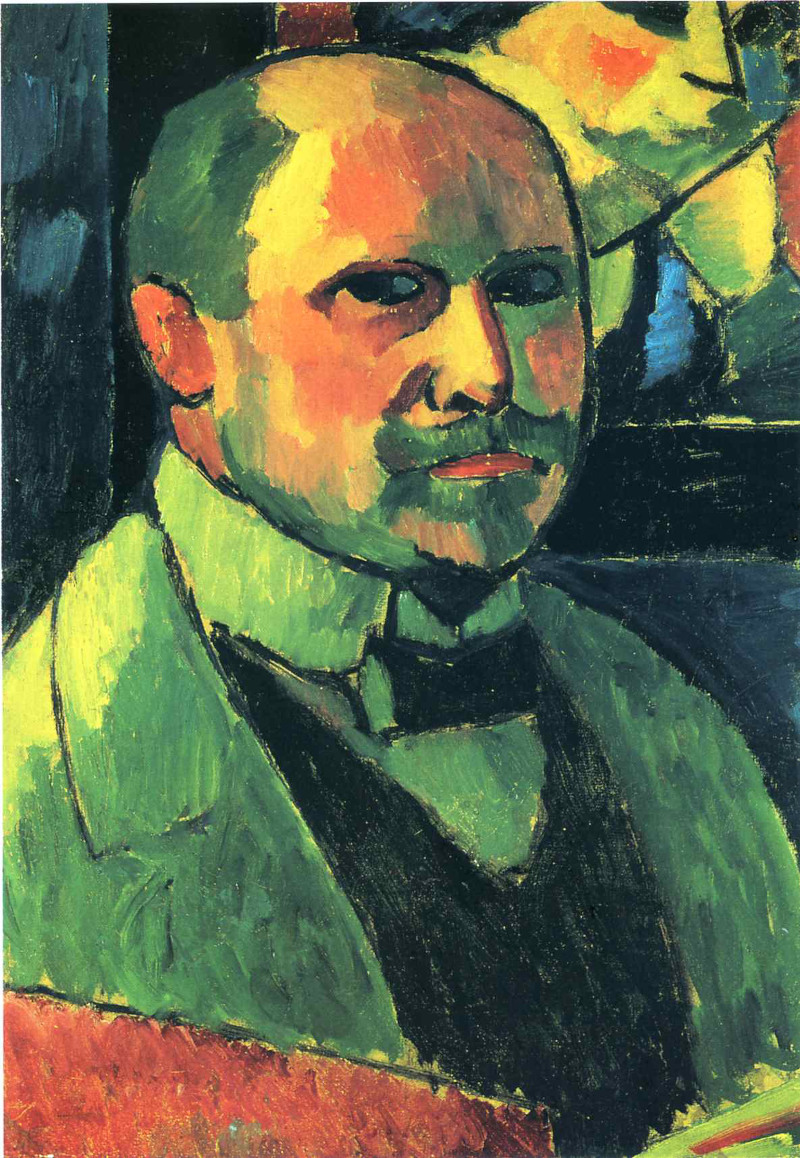 Self Portrait by Alexej von Jawlensky
Self Portrait by Alexej von Jawlensky
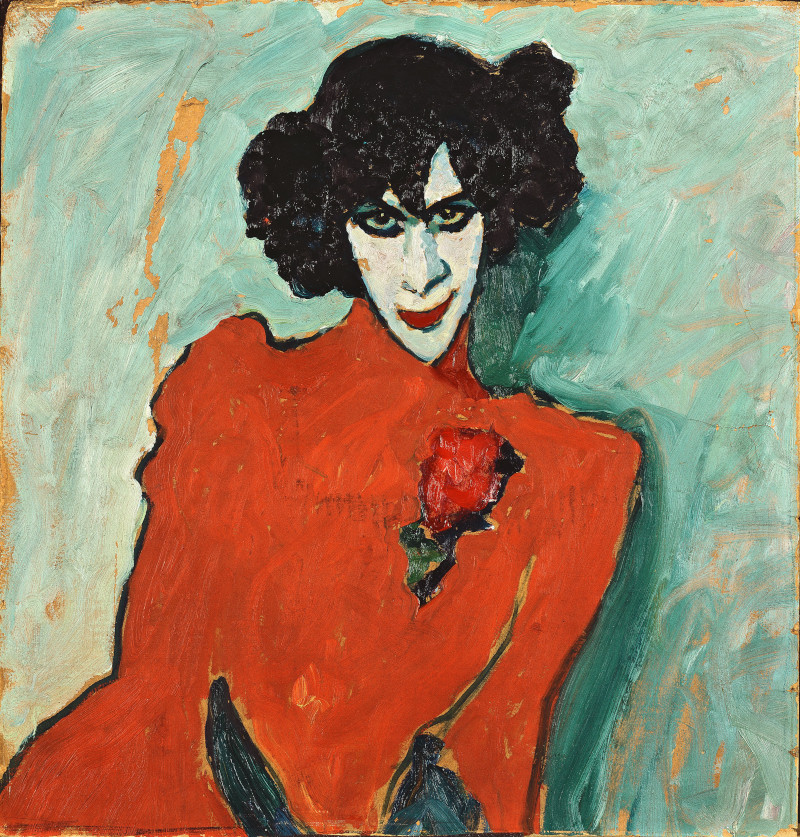 Portrait of Alexander Sakharoff
Portrait of Alexander Sakharoff
Jackson Pollock
Jackson Pollock, an American Abstract Expressionism artist, perfected the drip painting techniques which marked him out as a unique painter. His methods are world famous today, with Convergence perhaps being his most famous artwork. He rallied against his mental torment with a series of extraordinary artworks, rejecting formal art methods in order to fill huge canvases with raw paint.
Pollock was a part of the growing art movement in the US, and over the course of his lifetime cities such as New York would become major international art centres. It also marked the rise of original American art, influencing European painters for the first time, when previously any impact had always been in the opposite direction.
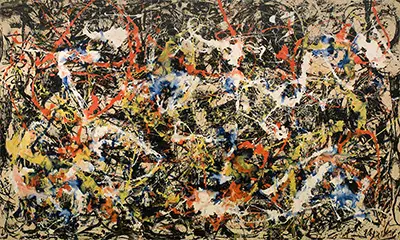 Convergence by Jackson Pollock
Convergence by Jackson Pollock
Mark Rothko
Mark Rothko produced abstract murals that would surround the viewer's window of vision to immerse them in a sea of bright color. Rothko did experiment with different forms of Expressionism art, particuarly in his younger days, but eventually settled on the abstract shapes and plains of color for which he would become most famous.
In today's art world, Rothko has a strong following thanks to the immediate and accessible nature of his work. He was another leading contributor to the rise of New York art, which today could be considered as the centre of western art, having taken over from the likes of Paris in France.
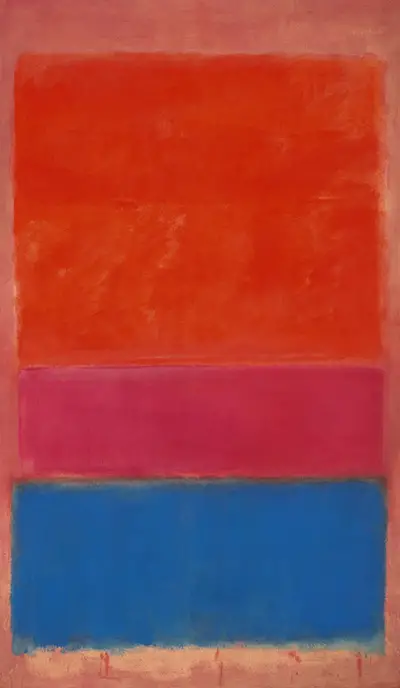 No 1 Royal Red and Blue by Mark Rothko
No 1 Royal Red and Blue by Mark Rothko
Origins and Early Influences of Expressionism
The origins of Expressionism lied in the cultural shifts occurring in Europe in the late 19th and early 20th century. Traditional life was becoming disrupted by industrialization and the population shift towards life in the city. Many saw this as an unhealthy development for humanity, and over time these changes would spread to other continents.
There was also a depression of mood within Europe after a series of significant wars, leading to artists needed to let out their emotions in a more contemporary style. Traditional art forms were less expressive, and seemed unsuitable for these times. The honesty and purity of life appeared to be coming to an end, with the modern world fast approaching and this evolution required new art forms to match.
Additionally, Expressionism was in some ways a natural progression from earlier art movements, including Post-Impressionism. The likes of Vincent van Gogh had moved things on from the French Impressionist era, and started to connect with the mind in a visual manner. We were still some way from abstraction at this point, but the evolution had clearly begun towards the end of the 19th century.
The Formation and Activities of Expressionist Artist Groups
There were a number of art groups which fed into the overall Expressionist movement, each providing varied contributions. Many of these groups had a cross-over, where artists might switch from one to another, and often they would last just a few years before the members would start up another group with a new direction.
Die Brücke (The Bridge) was one of the more significant sub-groups, and formed in the German city of Dresden. Ernst Ludwig Kirchner, featured in our list of famous Expressionism artists, was a key part in this group. Several years later, the Der Blaue Reiter (The Blue Rider) was formed in Munich.
The Blue Rider featured Wassily Kandinsky and Franz Marc, alongside a number of skilled painters, and these two groups represented the rise in German Expressionism which would lead the way. Over time, some of these ideas would spread into other nations, whilst there were also some related painters who worked independently, but who naturally worked in a similar manner.
TThe Die Brücke artists specifically took these ideas into other avenues, besides just oil painting. Printmaking allowed them to spread their ideas more widely, at relatively nominal prices, whilst a number of Expressionist artists would also start to work on the theory of color, providing a greater depth to the overall movement.
Expressionism during World War I and its Aftermath
WWI brought such mental turmoil to Europeans that it cannot be denied as having influenced the rise of Expressionism art. Horrendous experiences were so commonplace at this time that a new form of art was required to reflect this. A darkness was combined with non-traditional techniques to display the feelings of the mind on paper, wood and canvas.
Whilst the continent was entirely used to war, and for centuries it had been commonplace, there was something about the horrors of WWI, as well as the following WWII, that raised the bar in suffering and anguish. Whilst some artists attempted to use art as an escape route, offering positivity within their work, most Expressionists embraced reality and attempted to make sense of it all, in a manner of healing.
Much of the content found in Expressionism was violent and shocking, combined with dark palettes and expressive forms. In terms of a social message, there was also a rejection of nationalism, underlining the consequences that this had brought about in recent times.
The Reception and Critical Reception of Expressionist Art
Expressionist Art would, inevitably, come up against considerable opposition from the traditional art institutions of the late 19th century. As with almost all new artistic styles, progress was hard earned and the earliest exponents would come up against many challenges. Even the Impressionists, who by now were a part of the mainstream, would go through the same experiences around fifty years earlier.
The US, a relatively young nation, seemed most suitable for this new approach, and it would eventually bring about a number of Expressionism artists itself. They were less connected to the past, and so Expressionist exhibitions proved successful here, particularly within cultures cities such as New York. Europe, by contrast, took longer to adapt and placed many obstacles in the way of artists such as Marc, Macke, Kandinsky and Klee.
German Expressionism succeeded because of the prominent of a younger breed of critics and art supporters, as compared to other European nations. This made them more able to embrace new ideas, and soon enough a number of non-German painters would move here in order to enjoy its more welcoming atmosphere.
Expressionism and the Exploration of Color and Form
Paul Klee and Wassily Kandinsky were art theorists, examining composition, color and all other aspects of art. Much of their work was experimental, explaining particularly why Klee produced so many thousands of artworks across his career. Color was key to their theories, including the different combinations on offer, and the impact delivered by them.
Color and emotion would be examined in depth, perhaps leading on from the discoveries of the Impressionists such as Monet and Post-Impressionists like Vincent van Gogh. Kandinsky also worked as a tutor, passing on many of his ideas to the next generation of artists, whilst also publishing some of his thoughts, producing a new relationship between art and academic learning.
In terms of form, different approaches included exaggeration and distortion. This had been seen with the Mannerists, in the Late Renaissance, but the Expressionists would take this idea to its limit. The main reason to diverge from reality was in order to append emotion into each depiction, when a precise, photo-realistic style could not tell us anything about the artist. Painters had spent centuries developing these realistic images, and now it was time for the next stage of artistic evolution.
Expressionism and the Rejection of Academic Traditions
Academic art institutions had been set up in order to ensure a certain level of quality within European art, whilst also trying to foster particular styles that ruling powers approved of. As we went through the 19th century, and into the 20th century, these institutions were deemed too restrictive, and many artists wanted to create alternative avenues for artists to follow.
Expressionism included a number of artists who were able to paint and sketch in the approved manner, but they just wanted to avoid this approach for their own oeuvres. Therefore they encouraged new techniques and grouped together in order to build some momentum. Quite what these new ideas were to be was unclear, and fractures regularly appeared in the direction of these groups, leading them to disband and then start up again in an alternative form.
The Role of Expressionism in the Development of Abstraction
Expressionism brought about the early stages of art's evolution towards abstraction. Anyone following the career of Kandinsky, for example, will see a visual representation of this journey. He did not start off with assemblies of squares and circles, but rather arrived at that point as part of a process. Initially, he used bold colours and reduced forms, before slowly reducing details even more before eventually arriving at the style for which he is now most famous.
One can observe a similar route in the career of Piet Mondrian, who produced expressive tree portraits, and then eventually reduced his own work to a series of planes of color. Examples of his final, highly abstract approach can be found in Broadway Boogie Woogie and Composition with Red, Blue and Yellow.
The International Spread and Adaptation of Expressionism
The spread of Expressionism was partly inspired by the physical movement of a number of famous artists. Some would head to the US during war time in Europe, taking their ideas with them. Equally, some Russians would move to Germany and France in order to avoid persecution for their work, and potentially make more of an impact with their art.
German artists had a prominent position which allowed their work to spread into France and Scandinavia. Consequently, Fauvists would appear in France, taking some of their ideas into their own work, and combining it with bright, clashing color. In Austria we would have the Vienna Secessionists, with Schiele taking an expressive manner into his own work.
Expressionism and its Connections to Cubism, Surrealism and other Art Movements
Expressionism and Cubism arrived at around the same time and they also covered similar content. They were both a reflection on modern life, and provided a contrast between the tranquility of landscape art, against the busy lifestyle found within the cities. They were also both looking to find new ways of capturing objects within art, and a number of painters would spread their work across both movements at points in their career.
Surrealism also bore similarities in attempting to find new ways to combine art within the human mind, but most of their work captured objects in a realistic manner, but just in unusual combinations that remind many of a dream-like state. The likes of Dali and Magritte showed this approach at its best.
The Legacy and Lasting Influence of Expressionism on later Art Movements
Two major art movements to emerge from Expressionist era was Neo-Expressionism and the Abstract Expressionists. The latter art included within the list of famous Expressionism artists, such was the similarity of their approach. They predominantly appeared in the US, and marked the arrival of US art as a major force within the international art scene. No-longer would they be following in the footsteps of other regions, but rather leading the way, and names in this group included Jackson Pollock and Mark Rothko.
In a more general way, the Expressionists also helped encourage the evolution towards Abstraction, where simple forms would be used to represent objects, with no intention of perfectly replicating reality. The purpose was to allow an artist's expressive mood to show through instead, and this fostered much more creativity within art. By avoiding tried and tested formulas, art could now become more varied, reflecting our individual minds.



